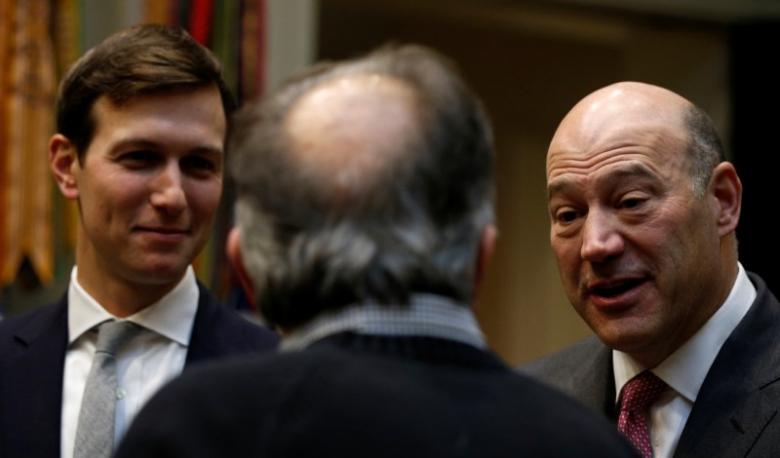By: Megan White

Candy canes, brick-sized candy bars, peppermint mocha frappe latte cappuccinos – ‘tis the season for sugar, a white powder that falls more abundantly than snow in the realm of holiday tradition. For the true sweet savants, December and January are just the icing on the cake. According to the Center for Science in the Public Interest, the average American consumed 78 pounds of sugar in 2010, including 39 pounds of sucrose, or “traditional” table sugar. As consumers sprinkle their diets with the sticky substance, they aren’t the only ones feeling the rush. Since as early as 1789, the United States’ sugar policies have offered the country’s cane and beet producers a pretty sweet deal in the form of tariffs, import quotas, price support loans, and processor marketing allotments (legally-binding limits on the amount of sugar that can be sold each year). But at an annual cost of nearly $2 billion (more recent and more politically charged estimates range up to $4.5 billion), U.S. government involvement in the sugar industry has begun to leave a bitter taste in the mouths of consumers on both sides of the aisle.
Sugar tariffs first became a staple of U.S. trade policy in 1789 when, strapped for cash, the United States imposed a duty on imported commodities in an effort to raise government revenue. At the time, sugar production in the fledgling nation was limited at best, so the sugar tariff had more to do with feeding the Treasury than protecting an industry. Over the next 100 years, sugar production slowly increased, and in 1890, the McKinley Tariff Act replaced the tariff with a 2-cent-per-pound subsidy. Unable to compete with international sugar prices, the United States scrapped the subsidy four years later and reinstated the tariff that sugar producers would come to know and love.
Within 40 years, however, rapidly declining world prices rendered the sugar tariff insufficient to protect the U.S. industry, as it had become more economical for Americans to import sugar and pay the tariff than to purchase domestic sugar. In response, Congress passed the Jones-Costigan Act, or the Sugar Act, in 1934, which established import quotas and domestic marketing allotments, limiting the supply of sugar and propping up domestic prices. This legislation and its subsequent revisions form the basis of the modern U.S. sugar program. Though the act was allowed to expire following an unexpected price hike in the early 1970s, its provisions, including import taxes and quotas, were brought back with a vengeance along with a new non-recourse loan program by 1982. Under the program, sugar refiners could borrow money from the federal government and then either market their sugar and service the loan or forfeit their sugar to the Commodity Credit Corporation and default on the loan. The import quotas, which were replaced with a tariff rate quota in 1994, were meant to limit defaults and forfeitures by keeping the domestic price of sugar artificially high and ensuring that it did not drop below the loan rate. In theory, the program was supposed to operate at no net cost to the federal government.
Today’s sugar program, laid out in 2002 and continued under the 2008 Farm Bill as well as under both the House and Senate’s proposed 2013 bills, is a sticky, tangled web of policies that essentially serve to raise the domestic sugar price above the world price. These policies include a loan rate of 18.75 cents per pound for raw cane sugar and 24.09 cents per pound for refined beet sugar and an overall allotment quantity (the amount of sugar domestic producers can sell in the U.S. market) of no less than 85 percent of estimated consumption. Additionally, the United States maintains a tariff rate quota at the World Trade Organization minimum, restricts the Secretary of Agriculture’s ability to adjust the tariff rate quota, and requires that the USDA, in order to avoid loan forfeitures, must purchase any surplus sugar at a loss for ethanol production. Basically, the sugar program is designed to guarantee the income of sugar producers by controlling the supply and maintaining the price of sugar.
These measures have generated quite a sugar-induced buzz among the U.S. industries that rely on the substance as an input and American consumers, the parties that ultimately shoulder the cost of the program. With some fluctuation in price, U.S. consumers have paid roughly twice the world market price of sugar over the past 20 years. In October 2013, the world market price of wholesale refined beet sugar was 26.5 cents per pound, while in the United States, the price was 43.4 cents per pound. The artificially high price of sugar also exacted an indirect price on American consumers: with the reinstatement of sugar controls in the late 1970s, the newly purposed and relatively inexpensive high fructose corn syrup came to replace sugar in many American products. The jury is out on which substance is unhealthier, but items produced with cane sugar consistently rank higher in taste tests.
In addition to paying a higher price in the market, American consumers pay for the sugar program in the form of government spending. As part of its deal with the producers, the U.S. government must purchase and store any surplus sugar. When supply surged ahead of demand in August 2013, the USDA combated the plunge in prices by purchasing 7,118 tons of refined beet sugar for $3.6 million, which it sold to an ethanol producer at a loss of $2.7 million. The move was intended to help sugar producers repay $298 million in outstanding loans, which, if unpaid, would turn into forfeited sugar. This was the third such intervention of the summer.
Advocates of the sugar program argue that protectionist policies in other countries left the United States no choice but protect its own industry (and jobs) in response. Under a provision of NAFTA that took effect in 2008, for example, subsidized Mexican sugar flooded the U.S. market and placed immense downward pressure on prices. But due to the sugar program, the price of this downward pressure did not fall on sugar producers, but on consumers and taxpayers. If the United States wishes to see other nations’ protectionist agricultural policies eliminated, maintaining its own high trade barriers is not necessarily the answer. In terms of job protection, the American sugar industry is by no means the job-creator of the year. The Department of Commerce estimates that for every job saved in sugar production, the United States loses three confectionery manufacturing jobs. Pinched by inflated sugar prices, candy makers, bakers, and food processors are moving abroad.
Despite efforts from these sugar-dependents and groups such as the Coalition for Sugar Reform, sugar producers have thus far been able to sweet talk their way out of any significant legislative scrutiny. In 2013 alone, the sugar cane and beet industry contributed about $5.3 million to politicians on both sides of the aisle. Sens. Al Franken, D-Minn., and Marco Rubio, R-Fla., do not agree on much, but as representatives of two sugar-producing states, both seem to have something of a sweet tooth. Though sugar consumers have ramped up their lobbying efforts since the 2008 Farm Bill, they cannot quite compete with the sugar-producing Goliath.
The House and the Senate will likely finish off their updated Farm Bill deliberations in 2014. At the forefront of the discussion are the cuts to food stamps, allowing the sugar question to fly somewhat under the radar. For the time being, it appears that the U.S. sugar program is here to stay. Still, for all its sweetness, the Big Sugar price tag has turned increasingly sour on American consumer palate. This holiday season, be on the lookout for visions of sugarplums followed closely by dollar signs.

